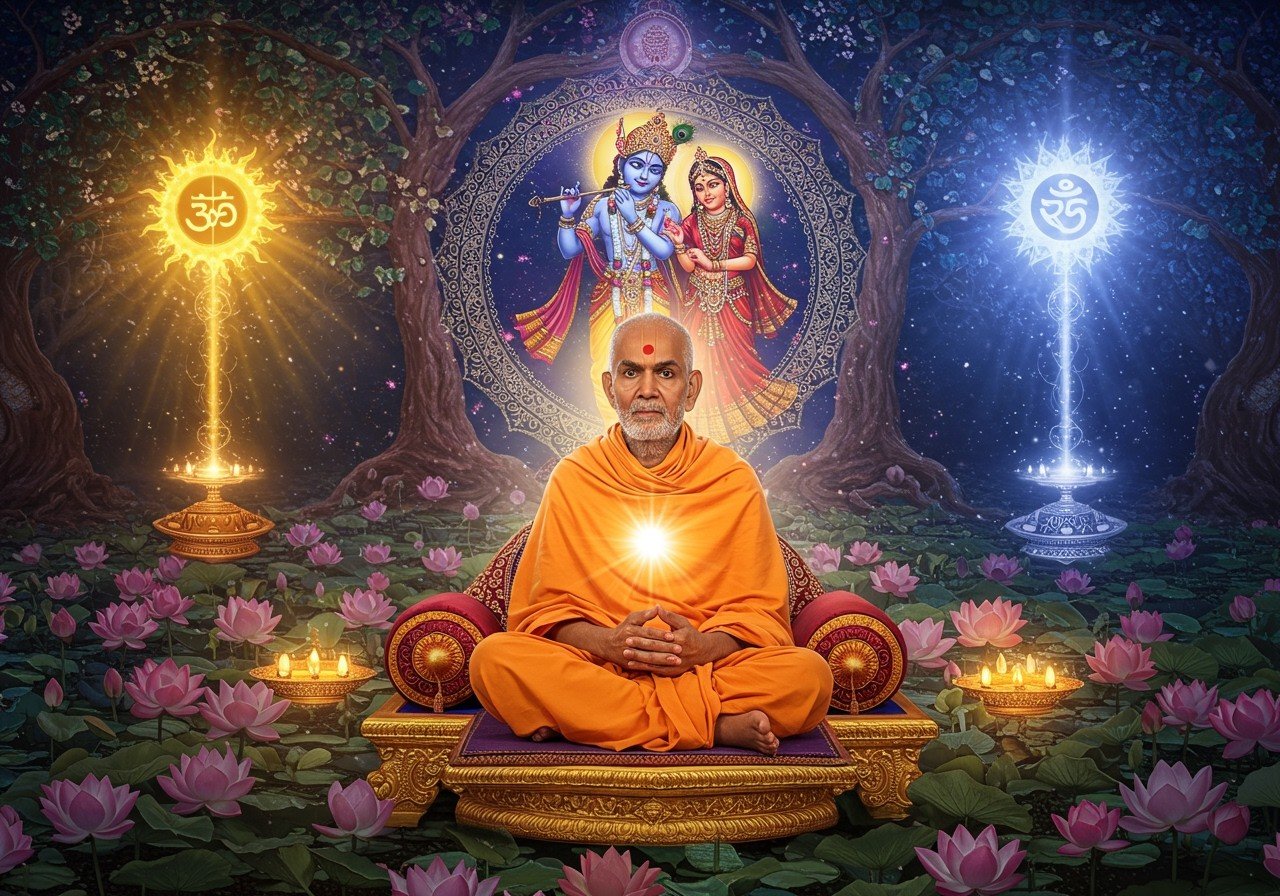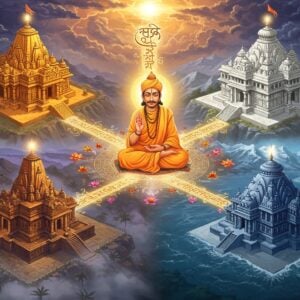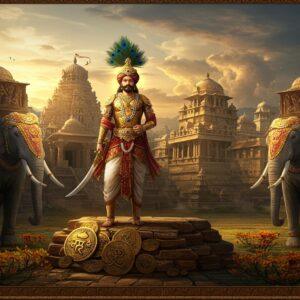
Nimbarkacharya, a revered Hindu philosopher and saint, holds a significant place in India’s spiritual heritage. His teachings, centered around the Dvaitadvaita philosophy, offer a unique perspective that blends dualism and non-dualism. This delicate balance continues to resonate with those seeking spiritual understanding within traditional frameworks. Delving into his life and teachings provides valuable insights into the rich tapestry of Indian culture and religious thought.
Life and Journey of Nimbarkacharya
Nimbarkacharya, also known as Nimbarka, Nimbaditya, or Niyamananda, graced the world around the 12th or 13th century. While his exact birthdate remains a topic of scholarly discussion, his impact on philosophical thought is undeniable. Born in Andhra Pradesh, he displayed a profound spiritual inclination from a young age, eventually renouncing worldly pursuits. His pilgrimage to Vrindavan proved pivotal, with the Bhagavad Gita and Srimad Bhagavatam profoundly shaping his spiritual understanding. In Vrindavan, he established the Nimbarka Sampradaya, one of the four primary Vaishnava traditions. You can find Bengali version of Srimad Bhagavad Gita at poojn.in. This lineage has diligently preserved his teachings across generations, ensuring their continued relevance and influence.
Understanding Nimbarkacharya’s Dvaitadvaita Philosophy
Nimbarkacharya is renowned for his profound Dvaitadvaita philosophy, a system that harmoniously integrates dualism and non-dualism. This approach acknowledges the distinct existence of the soul and God while simultaneously recognizing their inherent unity. It’s a nuanced concept often referred to as Dualistic Monism, emphasizing the interconnectedness of all beings with the divine.
Key Principles of Dvaitadvaita
- Difference and Non-Difference: At the heart of Dvaitadvaita lies the idea that the soul (Jiva) is both different from and non-different from Brahman (the ultimate reality). This seemingly paradoxical concept suggests that while individual souls possess unique identities, they are ultimately part of the divine whole. Much like sparks emanating from a fire, they retain their individual form while being inseparable from their source.
- Brahman as the Supreme Reality: Dvaitadvaita affirms Brahman as the sole independent entity, the source and sustainer of all existence. The world (Jagat) and individual souls (Jiva) are dependent on Brahman for their being, drawing their existence and essence from this ultimate source. However, Brahman remains distinct and transcendent, existing beyond the limitations of the created world.
- The Three Realities (Tattva): Nimbarkacharya’s philosophy recognizes three fundamental realities or Tattva. These are Chit (the conscious principle, represented by the soul), Achit (the unconscious principle, encompassing the material world), and Ishwar (God, the Supreme Being). These three realities are interconnected and interdependent, reflecting the intricate relationship between the divine, the individual, and the cosmos. Explore Hindu philosophy further on poojn.in.
Bhakti: The Path to Liberation
Bhakti, or devotional service, holds a central position in Nimbarkacharya’s teachings. He emphasized the importance of cultivating a loving relationship with Radha and Krishna, whom he considered the supreme manifestations of the divine. Through sincere devotion and surrender to God, individuals can attain liberation (moksha) and experience the ultimate unity with Brahman. You can shop Radha Krishna Bigraha and other deity idols at poojn.in. Nimbarkacharya advocated for a path that integrated both intellectual understanding and heartfelt devotion, making spiritual growth accessible to people of diverse temperaments.
Poojn.in: Supporting Your Spiritual Journey
At poojn.in, we offer a wide selection of products to support your exploration of Nimbarkacharya’s teachings and the Dvaitadvaita tradition. Explore our collection of sacred texts, puja items, deity idols, and worship accessories to enhance your spiritual practice.
Frequently Asked Questions about Nimbarkacharya and Dvaitadvaita
What is the central teaching of Nimbarkacharya? Nimbarkacharya’s core teaching revolves around the Dvaitadvaita philosophy, which emphasizes the simultaneous difference and non-difference between the individual soul and the Supreme Being (Brahman).
What are the key texts associated with Nimbarkacharya? He wrote commentaries on the Brahma Sutras and the Bhagavad Gita, elucidating his philosophical perspective. These texts remain essential resources for understanding Dvaitadvaita.
How does Dvaitadvaita differ from other Vedanta schools? Dvaitadvaita distinguishes itself from other Vedanta schools through its unique approach to the relationship between the individual soul and Brahman. It posits a simultaneous difference and non-difference, unlike Advaita Vedanta, which emphasizes absolute non-dualism, or Dvaita Vedanta, which stresses absolute dualism. Find more about Hindu philosophy at poojn.in.
What is the significance of Radha and Krishna in Nimbarkacharya’s tradition? Radha and Krishna are revered as the supreme divine couple in the Nimbarka Sampradaya. They symbolize the ultimate expression of divine love and the unity of the individual soul with Brahman. Learn about Hindu symbols and their significance at poojn.in.


